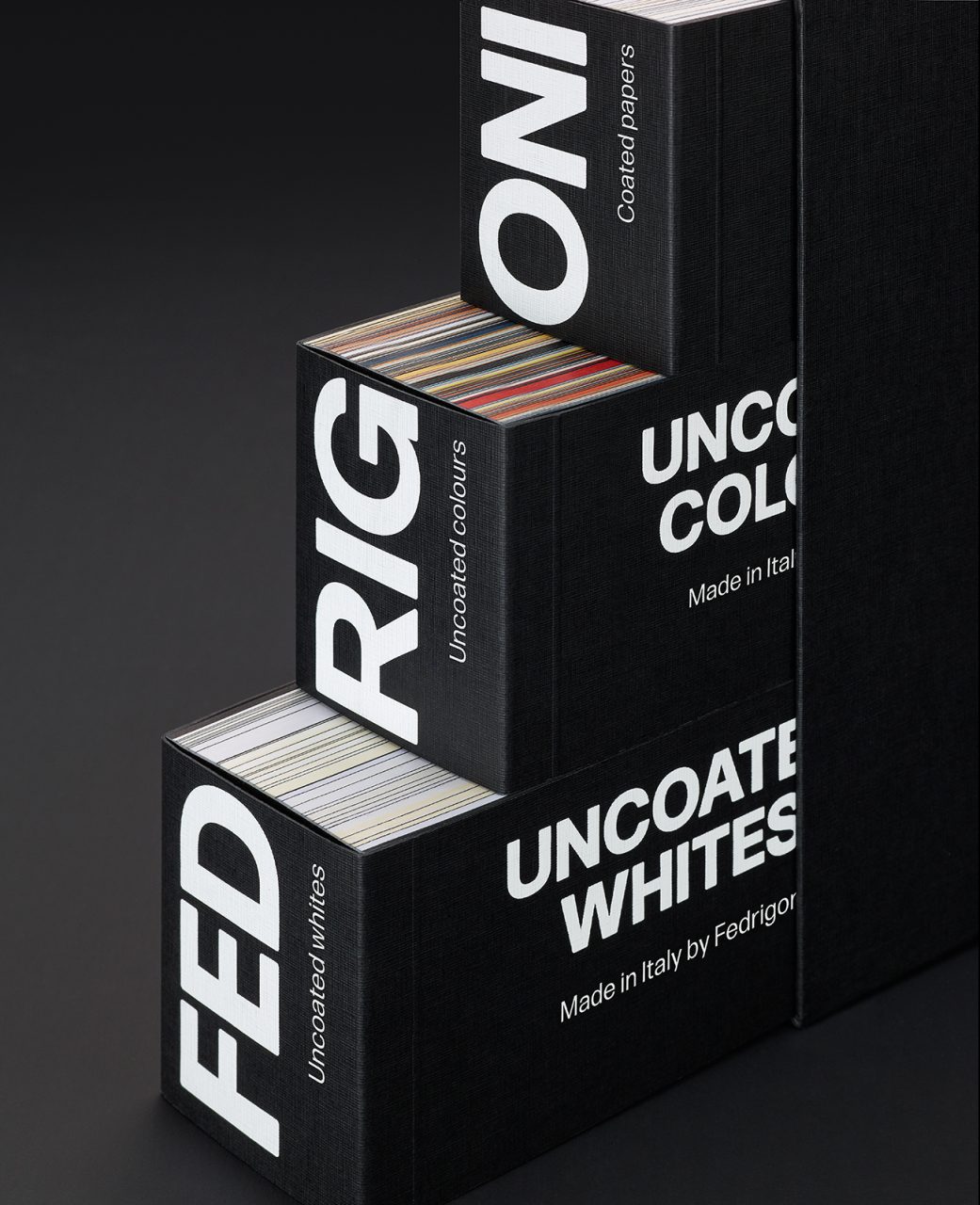Book in a box
From the beginning, GTF sought to make Paper Box like a book – something you would treasure and keep – rather than an item of marketing ephemera. The designers requested a sheet of every single paper so that they could start working with the materials. ‘The first mock-up was made from an old book that had been sitting on our bookshelves,’ says Paul Neale. ‘We took it to a local printer and got someone to guillotine it into three parts. We then did some glueing and binding tests.’ Neale explains that the most useful design tool for making Paper Box was the spreadsheet program Excel, which he and designer Alex Ecob used to organise every Fedrigoni paper into three books with 62.5mm wide spines that will fit snugly in the box. ‘There’s quite a bit of maths involved,’ says Neale. ‘Alex was king of the spreadsheet in this.’ While half their time was spent working out the selection of papers this way, the other half was taken up making models of the sample books. ‘We had to make it to know it would work,’ says Neale. ‘You can only design for paper on screen for so long.’
Restrained and robust
The GTF team was conscious that a sample book exists to sell raw materials, and that the design had to be restrained and simple. They chose the typeface Forma (a 1968 sans serif designed by a team of prominent designers for the Italian foundry Nebiolo) for its ‘strong shapes and weighty forms’. The box (case) for Paper Box is made from black-core board, lined externally with Imitlin Fiandra Nero 125 g/m².
Neale and Stevens have been enthusiastic users of Imitlin for a long time. ‘It’s a trusted “go-to” cover-lining material,’ says Neale. ‘Not only is it robust, it also feels robust.’ The designers appreciate the fact that this stock has been in Fedrigoni’s collection for at least five decades.
To help promote Paper Box, GTF, in collaboration with Studio AKA’s Kristian Andrews, has made a short animation that demonstrates the book’s beauty and utility. The 25-second video clip is underscored by a percussive soundtrack that composer Dave Pape created from the sound of paper pages being flipped – a stroke of digital marketing genius for such a tactile, analogue product.







